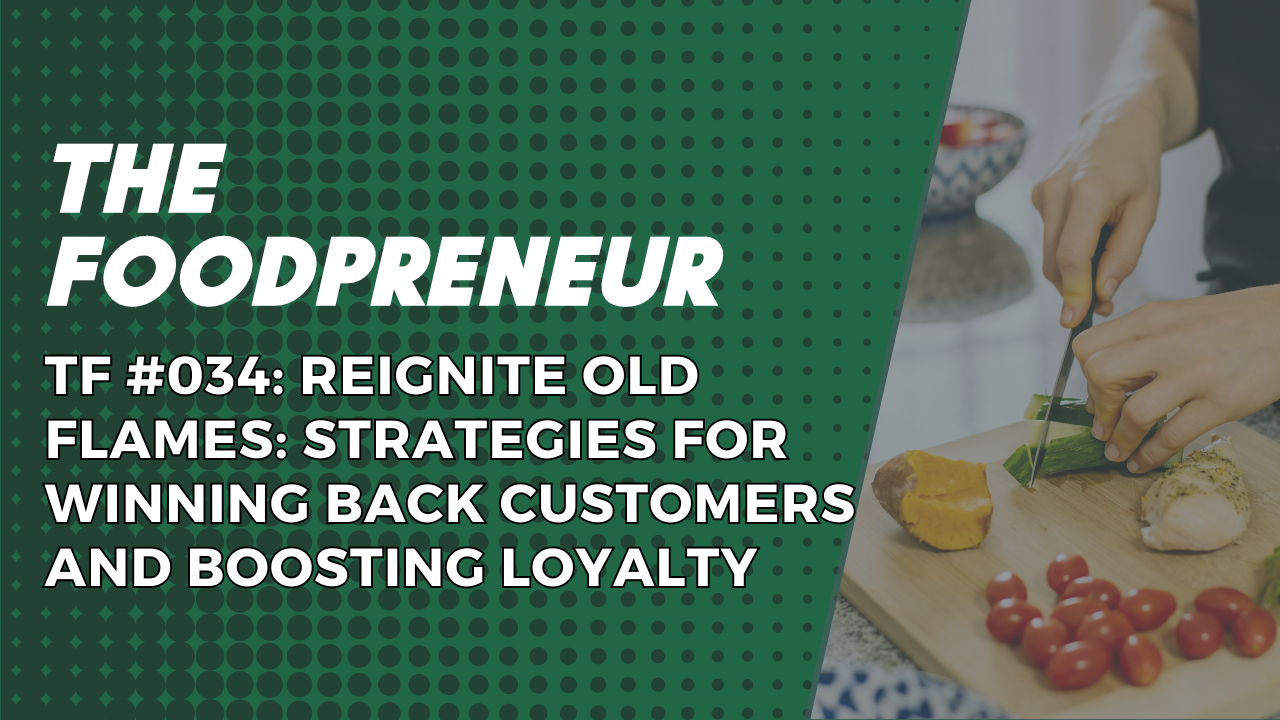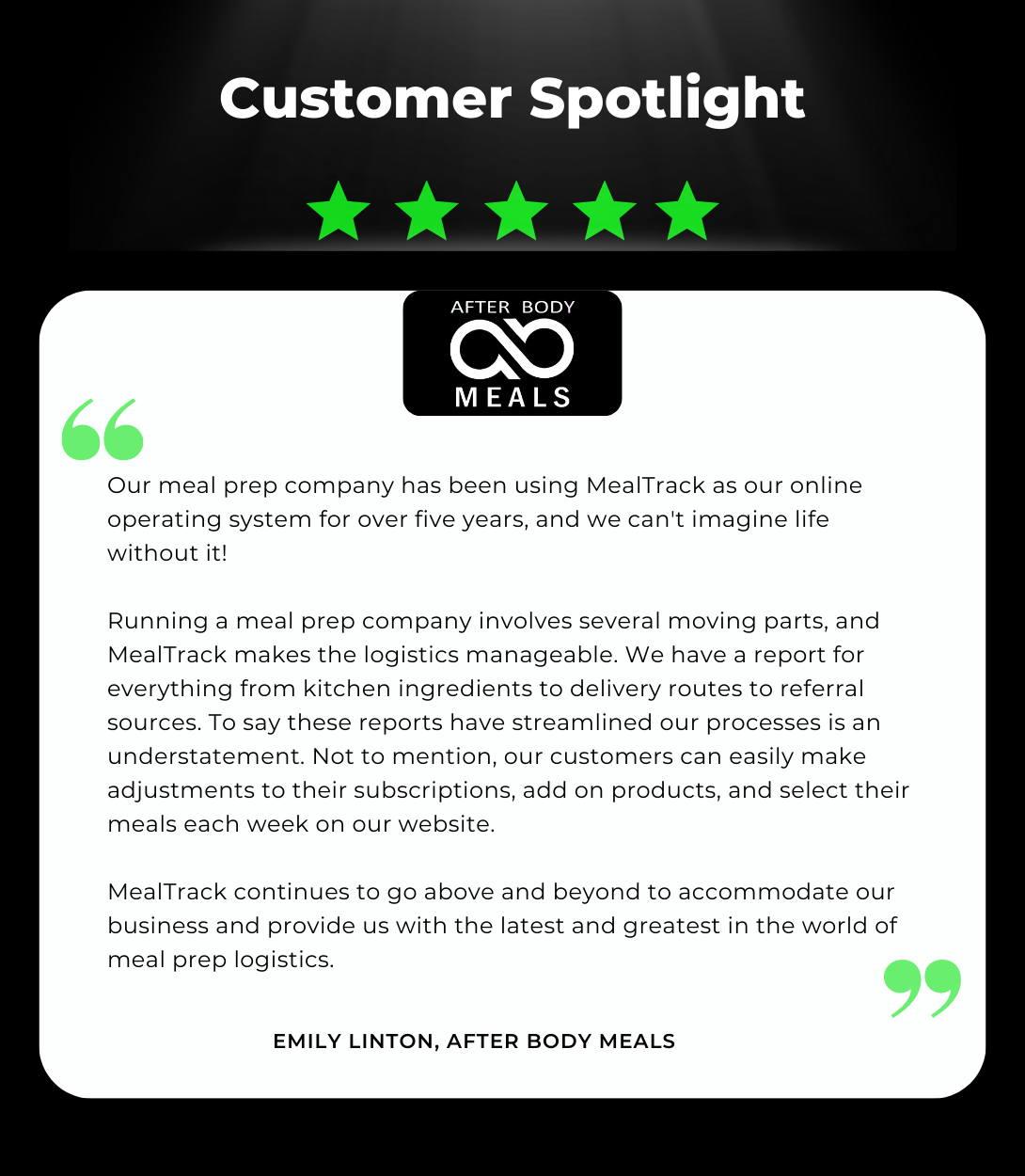The Foodpreneur #034

Reignite Old Flames: Strategies for Winning Back Customers and Boosting Loyalty
The heat-and-eat meal delivery landscape is competitive, which means it’s key to drive market share and retain existing customers. However, businesses often encounter the challenge of lost customers and prospects drifting away over time. This is where a win-back campaign comes into play, serving as a strategic approach to re-engage those who have lost interest or moved on.
Done right, win-back campaigns can be extremely successful and significantly lower cost than engaging and converting new leads into paying customers. The key, though, is understanding the unique value your heat-and-eat meal service brings to the table and why former customers signed up—and left—in the first place. Armed with that information, it’s easy to build a high-converting win-back campaign that seriously boosts your business.
Understanding Win-Back Campaigns
If you’re new to win-back campaign planning, getting back to basics is important. A win-back campaign is a targeted marketing effort to rekindle relationships with customers or prospects who have either ceased engaging with your brand, discontinued their subscription, or haven’t purchased in a while. The goal is to understand why they left and offer them a compelling reason to return. These campaigns are crucial for businesses because retaining an existing customer is often more cost-effective than acquiring a new one.
Structuring Your Win-Back Campaign
Ready to start? Again, win-back success leans heavily on understanding your audience, their wants and needs, and how your heat-and-eat meal service can continue to bring value to these customers. Start here:
1. Identify Your Audience
The first step is to segment your lost customers and prospects based on their interaction level, last purchase, or engagement. Understanding the reasons behind their departure can tailor your messaging to address their concerns or changes in their needs.
2. Craft Your Message
Once you’ve identified why customers have drifted away, craft a message that speaks directly to those reasons. Whether it’s improved features, better pricing, or addressing past issues, your message should be clear, concise, and personalized. It’s not just about telling them what’s new but also showing that you value them and understand their needs.
3. Choose the Right Channel
Selecting the appropriate communication channel is critical. Depending on your audience’s preferences, you might choose email, social media, direct mail, or even a personal phone call. The key is to use the channel(s) with the highest chance of engaging them effectively.
4. Offer a Compelling Incentive
Incentives can be a powerful tool in win-back campaigns. Offer your audience something that has real value, such as exclusive discounts, loyalty points, or access to premium features. The incentive should be relevant and significant enough to motivate a return.
5. Measure and Optimize
Track the performance of your campaign through metrics like open rates, click-through rates, re-engagement rates, and, ultimately, conversions. Use this data to refine your approach, test different messages, and continually optimize your strategy for better results.
What Former Customers Want to Hear From You
Let’s step back and focus on step 2, “Craft Your Message.” Again, this is where relationships and a strong understanding of your audience come into play.
As you craft an outreach message, consider why your subscriber left—ideally, you’re polling people who cancel or opt out to understand what took them from satisfied subscriber to former recipient. If you don’t know? Now could be an ideal time to ask. From there, focus on a theme and tone that best aligns. For example:
1. Acknowledgment and Apology
If they left due to a negative experience, acknowledging the issue and offering a sincere apology can go a long way. Customers appreciate when a brand takes responsibility and is committed to making improvements.
2. Improvements and Updates
Letting former customers know about product improvements, new features, or services that address their past concerns shows that you’re listening and evolving. Highlighting these changes can reignite their interest in your offering.
3. Personalized Offers
Personalization is key. Reaching out with a generic message can do more harm than good. Show that you understand their specific needs and preferences with offers tailored just for them.
4. A Clear Path Forward
Make it easy for them to return. Whether it’s a simplified reactivation process, customer support on standby to answer questions, or a clear outline of the benefits of returning, the path to re-engagement should be as frictionless as possible.
5. A Vision for the Future
Share your vision for how your product or service will continue to evolve. Customers want to know that you’re not just a good choice for today but also investing in being a better choice tomorrow.
And if you truly don’t know why customers canceled? Consider leaning into a more multi-faceted play—share improvements and updates while offering a clear path forward (anchored with a discount) to re-engage.
Takeaway
Overall, win-back campaigns are vital for businesses looking to re-engage lost customers and prospects. By understanding your audience, crafting a personalized and compelling message, offering tangible incentives, and showing a commitment to improvement, you can turn past customers into loyal fans again. Remember, the goal is to win them back and keep them engaged for the long haul. With a strategic approach and a genuine effort to meet their needs, your win-back campaign can lead to meaningful and lasting reconnections.
Customer Spotlight

